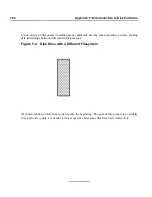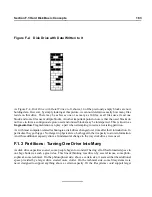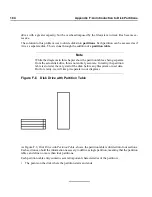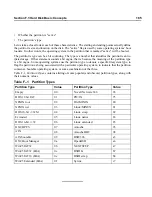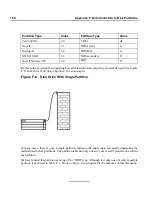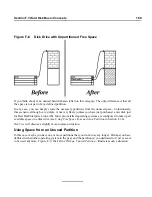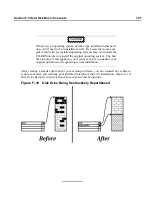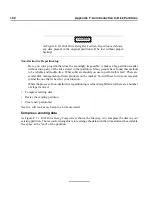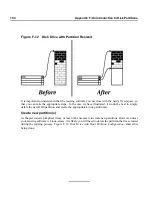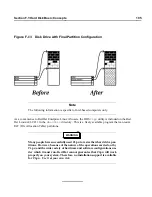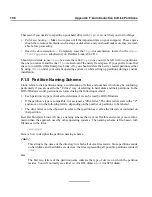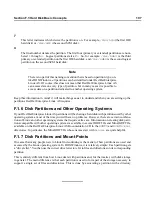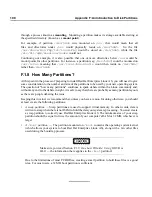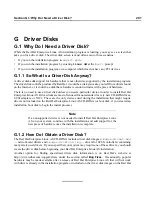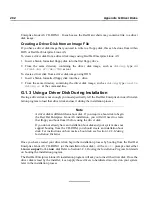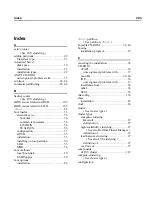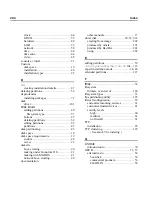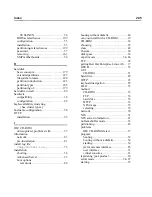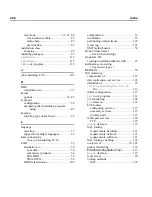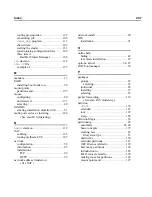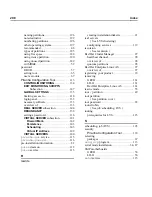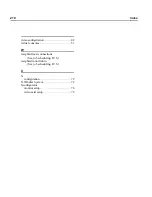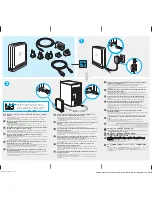
196
Appendix F:An Introduction to Disk Partitions
That said, if you decide to repartition your hard drive with
fips
, it is vital that you do two things:
•
Perform a backup — Make two copies of all the important data on your computer. These copies
should be to removable media (such as tape or diskettes), and you should make sure they are read-
able before proceeding.
•
Read the documentation — Completely read the
fips
documentation, located in the
dosu-
tils/fipsdocs
subdirectory on Red Hat Linux/x86 CD 1.
Should you decide to use
fips
, be aware that after
fips
runs you will be left with two partitions:
the one you resized, and the one
fips
created out of the newly freed space. If your goal is to use that
space to install Red Hat Enterprise Linux AS, you should delete the newly created partition, either
by using
fdisk
under your current operating system or while setting up partitions during a custom
installation.
F.1.5 Partition Naming Scheme
Linux refers to disk partitions using a combination of letters and numbers which may be confusing,
particularly if you are used to the "C drive" way of referring to hard disks and their partitions. In the
DOS/Windows world, partitions are named using the following method:
•
Each partition’s type is checked to determine if it can be read by DOS/Windows.
•
If the partition’s type is compatible, it is assigned a "drive letter." The drive letters start with a "C"
and move on to the following letters, depending on the number of partitions to be labeled.
•
The drive letter can then be used to refer to that partition as well as the filesystem contained on
that partition.
Red Hat Enterprise Linux AS uses a naming scheme that is more flexible and conveys more infor-
mation than the approach used by other operating systems. The naming scheme is file-based, with
filenames in the form:
/dev/
xxyN
Here is how to decipher the partition naming scheme:
/dev/
This string is the name of the directory in which all device files reside. Since partitions reside
on hard disks, and hard disks are devices, the files representing all possible partitions reside in
/dev/
.
xx
The first two letters of the partition name indicate the type of device on which the partition
resides. You will normally see either
hd
(for IDE disks) or
sd
(for SCSI disks).
Summary of Contents for ENTERPRISE LINUX AS 2.1 -
Page 1: ...Red Hat Enterprise Linux AS 2 1 The Official Red Hat Enterprise Linux AS Installation Guide ...
Page 8: ...viii ...
Page 14: ...xiv Introduction ...
Page 15: ...Part I Installing Red Hat Enterprise Linux AS ...
Page 16: ......
Page 26: ...26 Chapter 1 Steps to Get You Started ...
Page 30: ...30 Chapter 2 System Requirements Table ...
Page 80: ...80 Chapter 3 Installing Red Hat Enterprise Linux AS ...
Page 94: ...94 Chapter 4 Installing Red Hat Enterprise Linux AS via Text Mode ...
Page 95: ...Part II Configuring Red Hat Enterprise Linux AS ...
Page 96: ......
Page 100: ...100 Chapter 5 Introduction ...
Page 114: ...114 Chapter 6 Linux Virtual Server Overview ...
Page 153: ...Part III Appendixes ...
Page 154: ......
Page 156: ...156 Appendix A Additional Resources for LVS Clustering ...
Page 160: ...160 Appendix B A Sample etc sysconfig ha lvs cf File ...
Page 162: ...162 Appendix C Removing Red Hat Linux ...
Page 168: ...168 Appendix D Getting Technical Support ...
Page 178: ...178 Appendix E Troubleshooting Your Installation of Red Hat Enterprise Linux AS ...

